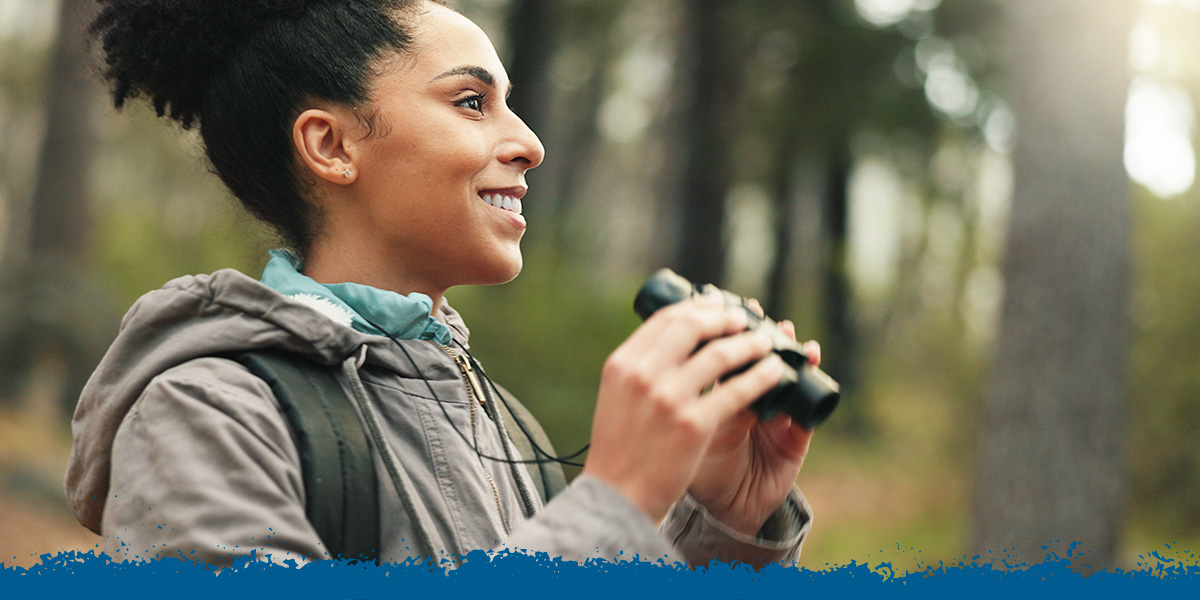

Delaware has several top destinations for bird-watching because it’s located along the Atlantic Flyway. Hundreds of bird species migrate up and down this flyway each year in search of food and warm temperatures. Delaware Bay is an important stopover point for many of them, some of which stay and nest in the area.
In this article, you’ll find the best birding destinations in Central Delaware. We’ve also included a list of the top bird species in the state, including rare birds like the red knot, and where to see them. If you’re a dedicated birder or just getting started, Delaware is an incredible place to view a wide range of species as they migrate along the coast.
Along the Delaware Bay route, there are several fantastic bird-watching sites to complete your birding bucket list. These are the top locations to visit if you’re birding in Central Delaware:
Located along Delaware Bay, Bombay Hook contains one of the largest tidal salt marshes left in the mid-Atlantic. It was established as a protected area in 1937 because of its importance in the Atlantic Flyway.
This wildlife refuge is only a 20-minute drive northeast of Dover and requires a small fee for entrance. Bird species you can see there include raptors, songbirds, shorebirds and waterfowl. Birders have seen red knots, bald eagles, snow geese, grasshopper sparrows and many other interesting species here.
Need a new ID guide or a specific list of species found at the refuge that season? Stop into the new visitor center, open Monday to Saturday from 8 a.m. to 4 p.m. and most Sundays from 9 a.m. to 4 p.m.
Every fourth Saturday from September through April, you can join a bird walk here with the Delaware Ornithological Society. Walks last about two hours and follow the Forest Discovery Tree Trail, which is less than 3 miles long.
The standing water at Bombay Hook also supports a large mosquito and biting fly population. Make sure you have insect repellant and wear long sleeves and pants to protect yourself.
You can access this beautiful wildlife area just 10 to 15 minutes outside of Dover. This birding area is located right under Bombay Hook National Park, making it easy to visit both spots on the same day.
Little Creek encompasses over 4,700 acres of habitat, including fields and tidal marshes. This park offers a viewing boardwalk and a 400-foot tower so you can easily view the area from above. It’s the perfect place to bring some binoculars to spot shorebirds and waterfowl!
Similar to Bombay Hook, there is a small entrance fee to Little Creek. You should also bring bug spray and a hat to protect you from marsh insects and sun exposure while hiking and standing in the viewing tower.
About 10 to 15 minutes southeast of Dover, St. Jones Reserve offers another prime location for bird-watching in Delaware. This wildlife area includes a 2-mile nature trail, a short boardwalk over the salt marsh and a visitor center with hands-on activities and exhibits.
St. Jones Reserve is part of the Delaware National Estuarine Research Reserve. Every year, on the third Saturday in October, you can attend the annual Blackbird Creek Fall Festival at the other site they manage, Blackbird Creek Reserve in Townsend.
This reserve is free to explore and offers another great place near Delaware Bay to birdwatch. It’s important to note that while trails are open all week, the visitor center is closed on weekends.
Located 30 to 40 minutes south of Dover, the DuPont Nature Center is another wonderful place to view migrating birds for free. It sits at a key point in the Milford Neck Nature Preserve, where the Mispillion River flows into Delaware Bay.
While the Nature Center itself is only open from April through September, you can access the viewing deck year-round. From this viewpoint, you can look over the salt marsh and sandy beach habitat that hosts many migrating shorebirds like plovers, dunlin and sanderlings.
DuPont Nature Center is one of the best places to watch the spring shorebird migration. Its location on the Delaware Bay allows birders to see a wide variety of species as they travel up the East Coast, following warm weather and increased food supplies. The view of Delaware Bay makes the experience even more memorable.
With over 500 species using the Atlantic Flyway, there are numerous different kinds of bird species you can observe in Delaware. Here’s a quick list of highlights so you can see the breadth and diversity of bird species that migrate through this area:
You can spot many birds of prey in Delaware, including but not limited to:
Some of these species stay and nest in wildlife areas, while others simply pass through during migration.
Also known as passerines, songbirds have beautiful vocalizations that alert you to their presence long before you see them. Here are some songbirds you can expect in Delaware:
One of the unique things about birding along Delaware Bay is the mix of songbirds and shorebirds. This area is a birder’s paradise!
Shorebirds live along the ocean or in wetlands and have long legs built for navigating water. Here are a few of the many shorebirds you can see along the Delaware coastline:
The red knot covers over 9,000 miles in its migratory flight each way. Although this bird is small, it’s an expert navigator! You can see red knots and many other shorebirds at popular Delaware birding sites.
Similar to shorebirds, waterfowl live near water and float on top of lakes, ponds and oceans. Here are some of the waterfowl you can observe in Delaware:
Other notable mentions include the scissor-tail flycatcher, red-headed woodpecker, northern flicker and eastern kingbird. For a complete list of birds you can see specific to Bombay Hook, view the extended list published by the U.S. Fish & Wildlife Service.
If you’d like to meet up with other birders while in the area, there are several groups you can connect with. Here are three options to consider when planning your trip:
Expect the unexpected when you explore Central Delaware — our small state is home to hundreds of migrating birds and offers a front-row seat to rare species you’ve been searching for.
In addition to hosting migrating birds, Delaware also welcomes traveling birders. If you’d like more information about where to stay and eat while you’re here, check out our free visitor guide for Central Delaware. Inside, you’ll learn more about fun things to do, places you can shop and nature destinations you should visit. We’re excited to see you!
